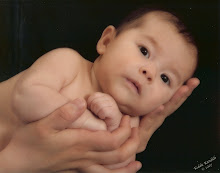Understanding Kawasaki Disease
Kawasaki Disease is an acute vasculitis (disorder involving inflammation of one or more blood vessels) which typically affects young children. Most often, the patients are young boys or girls in the first three years of life. After the age of 10 years, Kawasaki Disease is extremely rare, and the diagnosis should be regarded with suspicion.
Symptoms
The disease usually begins with a fever, unresponsive to Tylenol or aspirin, which continues for at least 7 - 10 days. Many - but not all - children develop a swollen area on the neck which looks like an infection. Doctors usually recognize the disease when they see an unresponsive fever accompanied by a rash; dry, cracked lips or other changes of the mouth or tongue; inflamed eyes (conjunctivitis); and arthritis or heart changes without other explanation.
The most important part of Kawasaki disease is its tendency to cause inflammation of the coronary arteries, which supply blood to the heart. Changes can be found on echocardiogram in about 15% of patients. A few of these patients will have aneurysms (balloon-like dilatations) that can be very serious. If one of the aneurysms becomes blocked or bursts, the blood flow to the heart is interrupted and the child can have a heart attack. Fortunately, this is very rare, and deaths due to Kawasaki disease are less than 5/1000.
Treatment
Treatment for Kawasaki disease is intravenous (IV) gammaglobulin. Large doses of intravenous gammaglobulin are usually very effective in stopping the fever of Kawasaki disease and seem to limit or prevent aneurysm formation as well. It is very rare for a child not to improve with gammaglobulin. Although some children require two treatments, if there is no improvement, the diagnosis should be reconsidered.
Other diseases can be confused with Kawasaki disease, which may require different therapy. Some doctors are reluctant to give gammaglobulin if the symptoms have been present for more than 10 days. In truth, gammaglobulin is still effective after the first 10 days, but the likelihood of preventing aneurysms is lower than if it is given during the first ten days. Recent studies have shown that corticosteroids are effective for many of the children who fail to respond appropriately to gammaglobulin.
Once the acute inflammation is brought under control, the chronic symptoms of Kawasaki disease are usually controlled with nonsteroidal anti-inflammatory drugs like naproxen or ibuprofen. Many cardiologists and some rheumatologists still use aspirin, but the other nonsteroidal drugs are considered safer, easier to give, and equally effective.
Where does Kawasaki Disease come from?
The etiology (origin) of Kawasaki disease is unknown. There have been many theories, but there are none that are generally accepted. It is not contagious to other children, although there are a few cases of brothers and sisters developing the disease. In rare cases, a few children have had two episodes. The disease often occurs in epidemics that occur every few years. In the winter of 2002, for example, the author received an increased influx of inquiries about the disease.
Recovery
Usually, children recover completely with proper therapy. There is some concern that children with damaged coronary arteries will have problems later in life, but this seems to be very rare. If your child has Kawasaki disease, he will need to be followed by his primary doctor, a cardiologist, and perhaps a rheumatologist or other specialist (depending on the symptoms).
The vast majority of children with Kawasaki disease recover and resume normal lives. Your doctor should be able to tell you if there is any reason to be unusually concerned. If your child has not recovered appropriately after an episode of Kawasaki disease, it is important to be sure that the diagnosis is right and that another disease requiring different therapy has not been missed. A pediatric rheumatologist is the specialist best able to do this for you.
Saturday, May 2, 2009
Subscribe to:
Post Comments (Atom)




































No comments:
Post a Comment